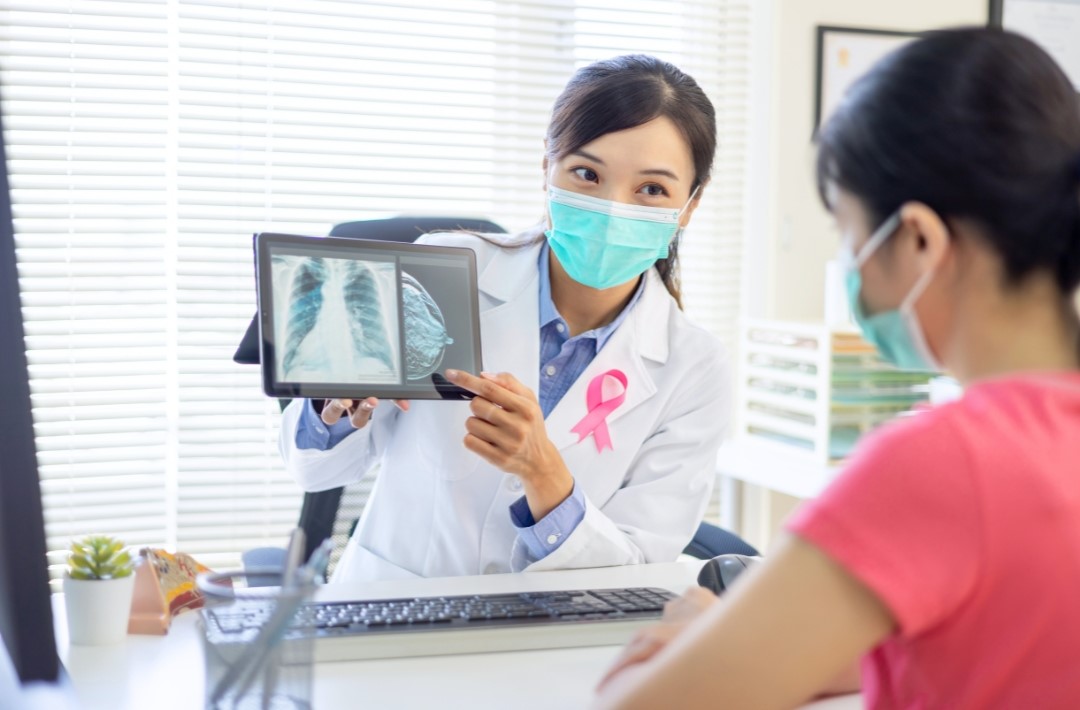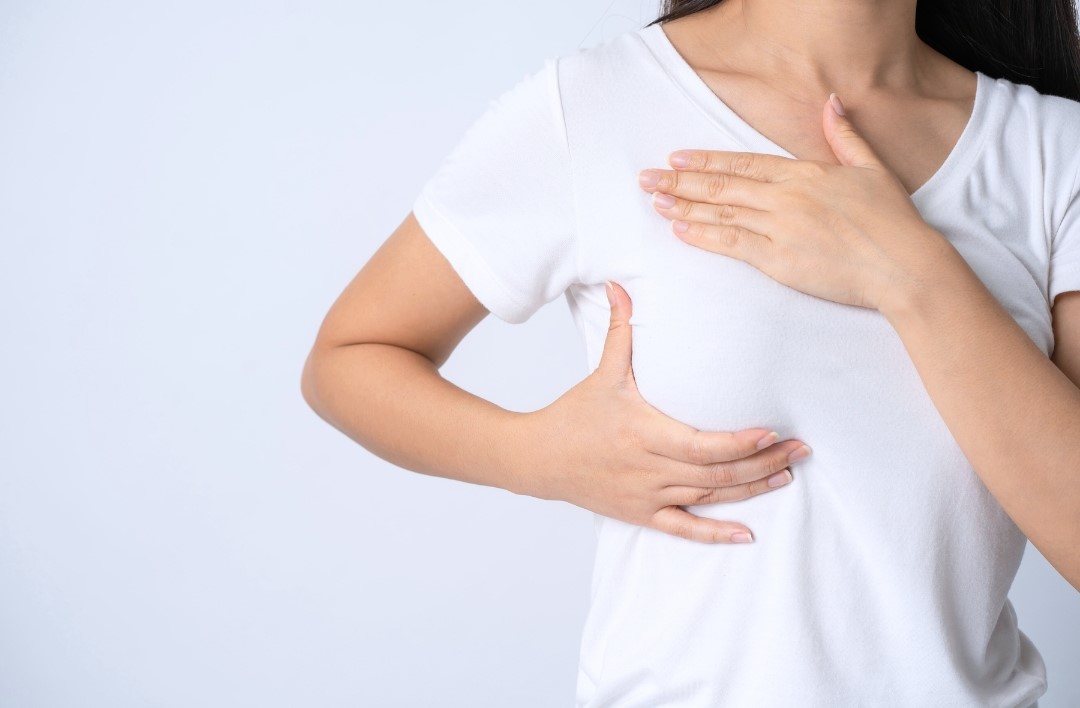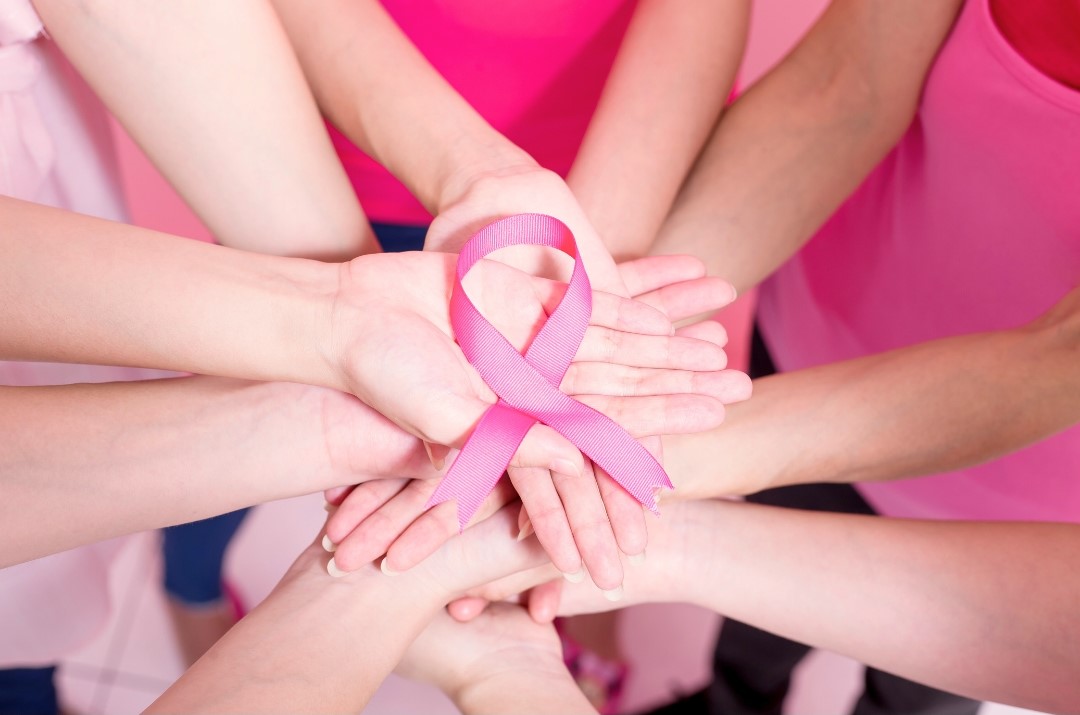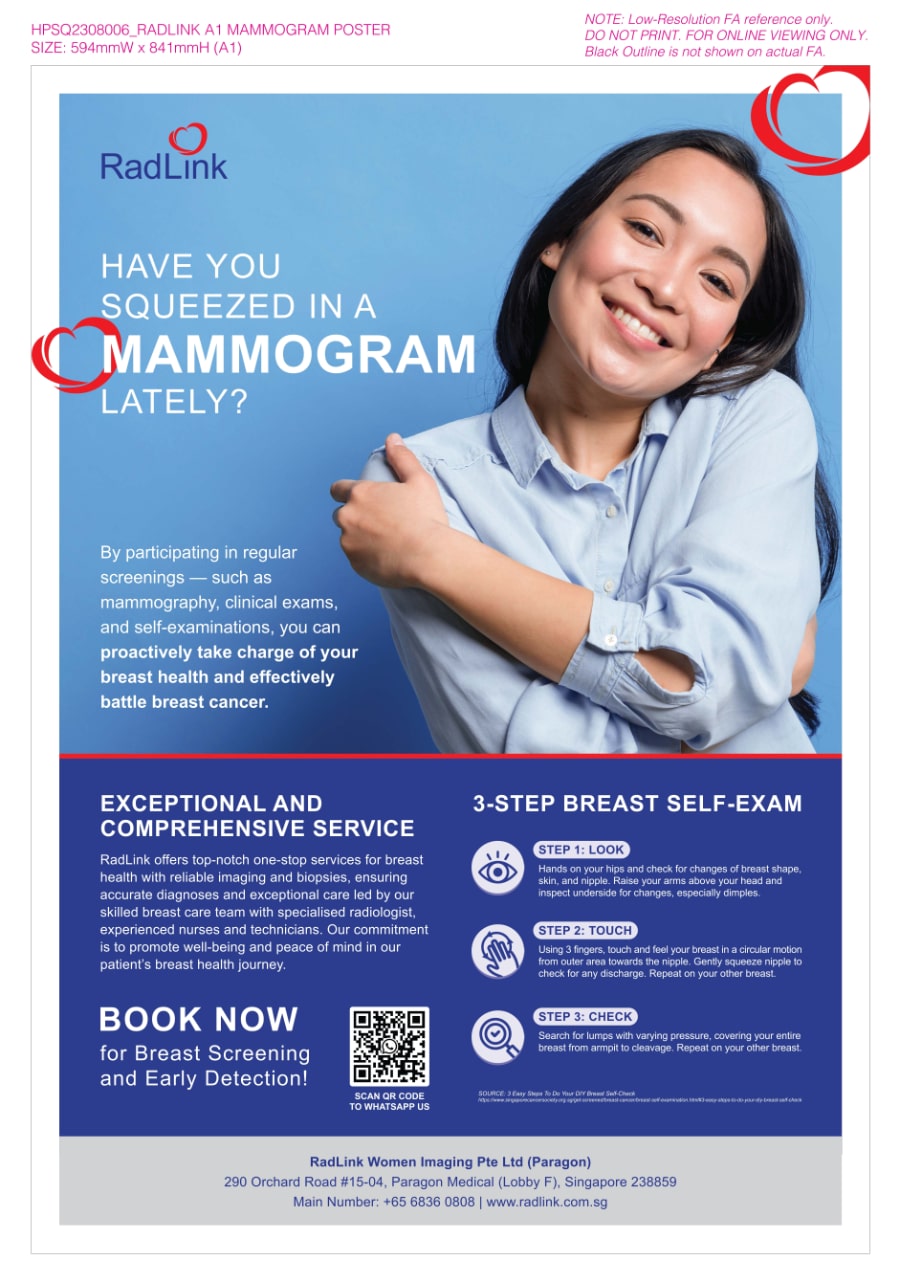


Breast cancer is the most common cancer among women in Singapore. According to the Singapore Cancer Registry Annual Report 2021, almost 2000 Singaporean women are diagnosed with breast cancer every year and almost 400 die from the disease. Nevertheless, early detection of breast cancer increases the chances of beating the disease and increasing survival rates. And the only way to detect breast cancer early is through regular mammogram screening.
Currently, mammograms are considered the gold standard and most reliable tool for detecting breast cancer, even before any lump can be felt with the hand. This article discusses everything you need to know about mammogram screening in Singapore, how to perform self-examination and check for a breast lump, early diagnosis, and breast cancer awareness.

A mammography test uses low-powered X-rays to give the internal image of the breast. A mammography machine comprises two flat plates between which the breast to be examined is positioned. A radiographer places the patient’s breast between the plates and compresses it for a few seconds, during which time the x-rays are generated and the required image is produced. To get a clearer image of the internal structure, the breast may be compressed more which may become painful and uncomfortable for some patients. The test is performed on one breast at a time. The radiographer may take images from multiple angles and get magnified views for better detection. The doctor may order additional tests and blood workups in case of abnormal results.
Women aged 40-49 are advised to go for mammography screening in Singapore every year since there is a higher risk of cancer in this age group. For women aged 50 and above, the frequency of breast screening should be once every 2 years. Women less than 40 years of age are not generally recommended to go for mammography test unless there is a history of breast cancer in the family or other genetic mutations that may put a woman at an increased risk of getting breast cancer. In addition to breast screening in Singapore, women should perform monthly self-examination of their breasts to be familiarised with the look and feel so that they can detect any unusual changes more efficiently that can help in early detection.
Regular breast cancer screening through mammography services are essential to detect breast cancer at the earliest stage. Apart from annual or biennial mammogram screening, women are advised to perform self-examination of their breasts once every month to look for any unusual changes in the breast in order to detect breast cancer early.
For menstruating women, the exam should be performed one week after the first day of their period. For women who no longer menstruate, they should select a date of the month and carry out the exam on the same date each month. If they feel any redness, swelling, lump, skin changes, or discharge from the nipples, they should consult a doctor as soon as possible.

A Breast Self-Exam (BSE) is performed while standing and while lying down. To perform the exam, stand in front of a mirror and look for any changes in the size or shape of the breasts, any dimpling in the skin, or any changes in the nipple while keeping your hands on your sides, then arms raised above your head, and finally, hands placed firmly on the hips and the breasts contracted.
The next step is to perform the exam while lying down. Place your right hand under your head and with your left hand, using the pulp of your fingers, feel the armpit and breast to look for any skin thickening or lumps. Start with the outer edge of the breast and slowly move towards the centre in small circular motions. Also check for any discharge from the nipples. If you notice any unusual change in the breast during the exam, seek professional help at the earliest.
Normally, a mammogram is the usual choice for detecting breast cancer; however, a breast MRI may be recommended in certain cases.
Usually, an MRI breast is ordered in the following cases:
When comparing a breast MRI with a mammogram, one technique has some advantages over the other, while the other is more effective in other aspects.
If a woman discovers a breast lump during a routine self examination, it is advised to get it checked by a professional healthcare specialist since a lump can be a sign of cancer as well as other conditions.
There are a few common types of breast lumps, some of which may be completely benign and harmless.
As discussed above, there could be several causes of breast lumps. Fibrocystic masses, breast cysts, and fibroadenomas are all harmless lumps that can be removed depending on the patient’s preference. Some lumps are caused by sebaceous cysts that are found in the skin layer of the breast whereas lumps called lipomas are found in the fatty tissues around the breast. The exact cause of malignant lumps of breast cancer is unknown.
If you detect a lump in your breast, the first step is to stay calm. Many of the breast lumps are benign and can be a cyst or fibrous mass. However, some of them may be malignant. Therefore, in case you feel a breast lump, you should schedule an appointment with your nearest healthcare provider for further evaluation, tests, and mammogram screening in Singapore if required.

October is breast cancer awareness month worldwide and the same holds true for Singapore as well. Each year in October, various events and campaigns are organised in Singapore to raise awareness about breast cancer and provide people with support and related information. Singapore’s Breast Cancer Foundation (BCF), Singapore Cancer Society, National Cancer Centre Singapore (NCCS), and the National University Cancer Institute, Singapore (NCIS) are some of the leading organisations that play their role in raising awareness for this disease. During the national campaign of breast cancer awareness month in Singapore, various seminars, webinars, roadshows, and walks are organised to raise awareness among people to go for regular mammography screening, breast ultrasound screening, and other tests for early cancer detection.
Breast cancer takes the lives of thousands of women worldwide every year. The survival rate for breast cancer plummets if it is detected at a later stage whereas the survival rates when detected early are quite high. Therefore, it is the need of the hour to raise awareness among women to carry out regular breast cancer screening and self-breast examination, so that any malignant lumps or cancerous tissues can be detected at an early stage and treated accordingly.

With the rising cases of breast cancer in Singapore, it is important for women, especially those aged 40 and above, to take charge of their breast health and participate in regular breast screenings such as mammography, clinic exams, and self-examinations for early detection and greater chances of fighting breast cancer. Self-examination should be carried out once every month while a mammogram should be repeated every 1 to 2 years.
RadLink is Singapore’s premium diagnostic imaging centre, offering state-of-the-art breast screening services, including mammography, MRIs, and ultrasound imaging. Our skilled breast care team comprises specialised radiologists, experienced nurses, and technicians who strive to provide exceptional care and services for accurate diagnosis. With our committed approach, we can help patients achieve peace of mind and promote well-being during their breast health journey. Book a slot for breast screening with RadLink today.
Although mammograms are considered the gold standard for detecting breast cancer, they miss some types of breast cancer during the routine screening. Some aggressive types of breast cancer can go undetected in a mammogram.
During your mammogram appointment, you will be required to undress from the waist up and change into a gown. The test takes about 10-20 minutes. During this duration, you will be alone with a technician. The technician will position your breast, one at a time, between the two imaging plates of the mammography machine. You may be asked to hold your breath as the plates apply pressure to compress the breast between them. The compression, which might feel a bit painful and uncomfortable, will only last 10-15 seconds after which the breast is released. The same will be repeated for the second breast after which the test will be over.
Typically, the amount of radiation a woman is exposed to during a mammogram is very low and does not cause any adverse effects. However, in some cases, the risk of radiation from a mammogram may be higher, for example, if higher doses of radiation were administered to get accurate images. Moreover, women with large breasts may require additional radiation to view the breast tissues accurately.
You can prepare for a breast screening mammogram by wearing a two-piece outfit that allows you to undress easily from the waist up. Your doctor may recommend that you take aspirin or paracetamol one hour before the exam to reduce discomfort. You are allowed to eat and drink as usual before the exam; no fasting is required.
Not all breast lumps are cancerous, in fact the majority of them are benign. Contact your doctor if you detect a breast lump for further screening and evaluation.
Most benign lumps are left as they are and continue to be monitored to check for any changes in mass. However, in some cases, your doctor may recommend surgical excision of the lump, especially if it is big, causes discomfort, or has a risk of interference with any nerve or blood vessel.
Most of the Breast Cancer Awareness Month activities and events organised by various cancer societies and organisations in Singapore are open and free to all, and anyone can participate. To register for any such activity, simply visit the website.